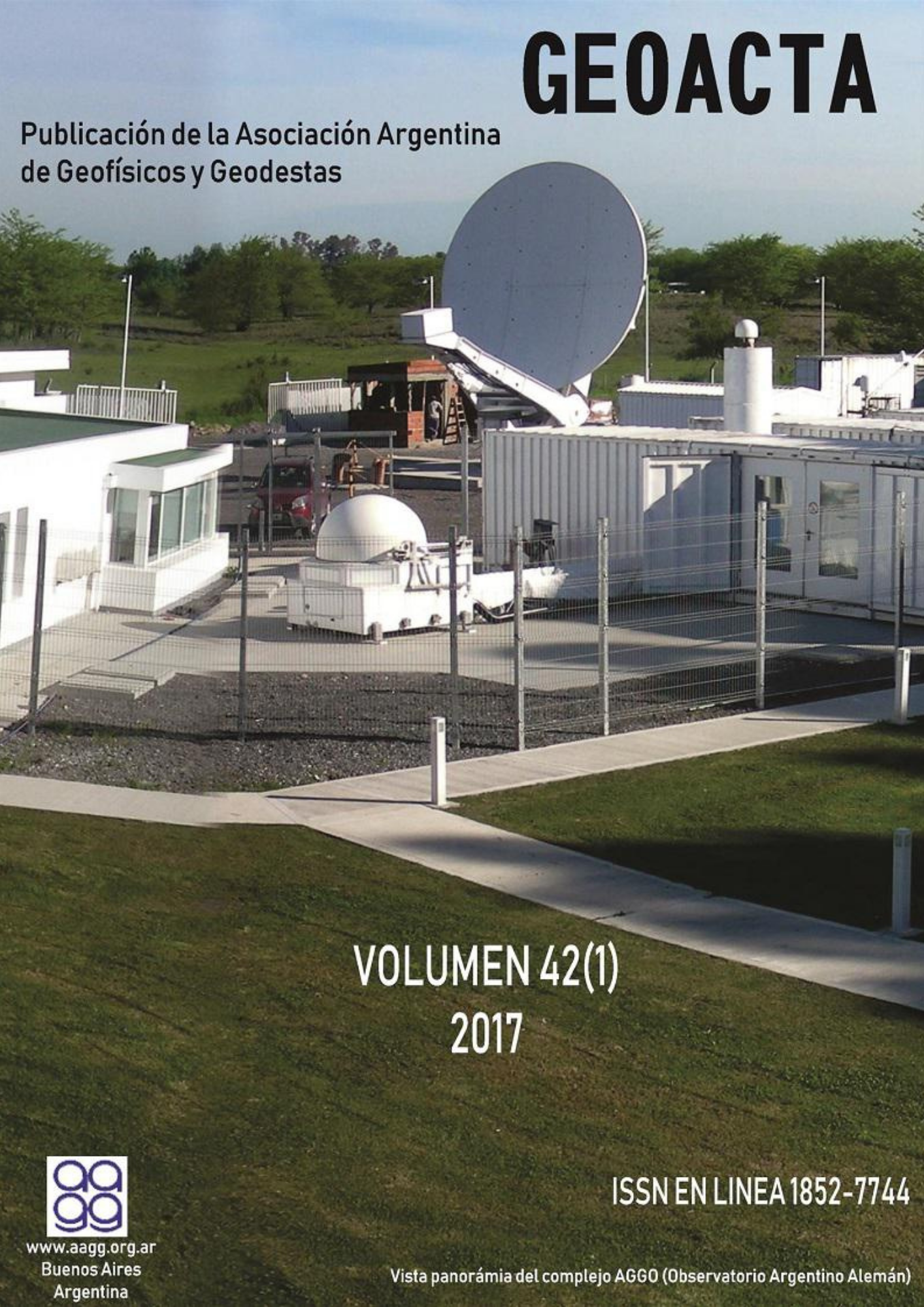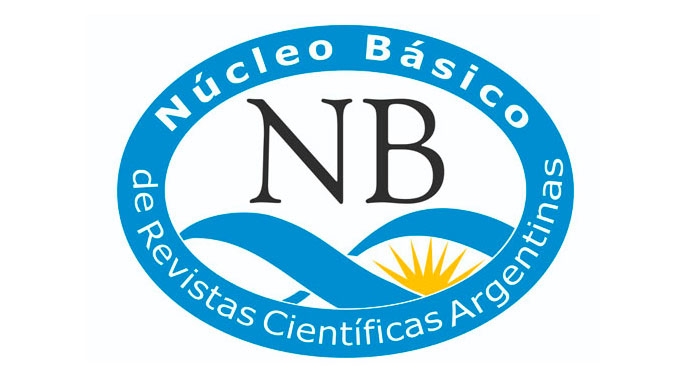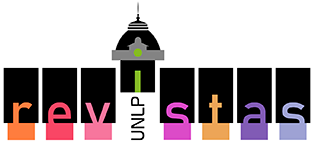Aplicación del Índice de Vulnerabilidad Costera (CVI) a los barrios costeros del partido de Mar Chiquita, Buenos Aires, Argentina
Palabras clave:
vulnerabilidad costera, playas urbanizadas, gestión municipal, partido de Mar ChiquitaResumen
Una de las herramientas más utilizadas para evidenciar la susceptibilidad de un determinado espacio ante un fenómeno y la capacidad de adaptarse al mismo, es el Índice de Vulnerabilidad Costera. El aumento del nivel del mar induce cambios en las áreas costeras, que en conjunto con otras variables climáticas, geológicas y oceanográficas hace evidente la necesidad de cuantificar dichos cambios. La zona costera del partido de Mar Chiquita (Buenos Aires, Argentina), presenta playas cuya geomorfología y nivel de antropización es variada. Es por ello que sus niveles de susceptibilidad también son variados respecto a diferentes eventos. De sur a norte, incluye los barrios costeros de Playa Dorada, Santa Elena, Santa Clara del Mar, Camet Norte, La Caleta, Mar de Cobo y Balneario Parque Mar Chiquita. Es uno de los sectores de la provincia de Buenos Aires más afectados por los procesos de erosión costera. Este fenómeno es originado principalmente por Sudestadas y por la incesante modificación del paisaje ribereño, causada por la urbanización y las obras de defensa costera. Planificar los niveles de susceptibilidad del espacio costero aumenta el margen de maniobrabilidad ante eventos no planificados.
El presente trabajo se enfocó en determinar el Índice de Vulnerabilidad Costera para las playas urbanizadas del partido de Mar Chiquita, mediante el empleo de fotografías aéreas, imágenes satelitales, información bibliográfica y salidas al campo, con el fin de determinar aquellos espacios en los cuales la gestión municipal debe concentrar sus esfuerzos. Los valores de CVI (Índice de Vulnerabilidad Costera) para el área de estudio, arrojaron el valor más alto de vulnerabilidad para el barrio La Caleta, con un valor de CVI de 25,98 y el más bajo para Santa Clara del Mar, con un valor de CVI de 2,45
Descargas
Citas
Bértola, G.R., A. Merlotto, L. Cortizo, F.I. Isla, (2013). Playas de bolsillo en Mar Chiquita, provincia de Buenos Aires. Revista de la Asociación Geológica Argentina, 70(2): 267-278
Codignotto, J.O., (2005). Vulnerabilidad al ascenso del nivel del mar y cambio climático en la costa argentina. Revista de Geologia Aplicada a la Ingeniería y al Ambiente, 21: 25-28
Diez, P.G., G.M.E. Perillo, M.C. Piccolo, (2007). Vulnerability to sea-level rise on the coast of the Buenos Aires Province. Journal of Coastal Research, 23(1): 119-126
Fernández, J.M., M.J. Verón, G.R. Bértola, (2014). Transporte litoral desedimentos y evolución de la línea de costa del Partido de Mar Chiquita, Pcia. de Buenos Aires. XIV Reunión Argentina de Sedimentología – RAS. Puerto Madryn, Argentina, 1 al 5 de septiembre de 2014
Gornitz, V., (1991). Global coastal hazards from future sea level rise. Palaeogeography, Palaeoclimatology, Palaeoecology (Global and Planetary Change Section), 89: 379-398
Gornitz, V., R. Daniels, T. White, K. Birdwell, (1994). The Development of a Coastal Risk Assessment Database: Vulnerability to Sea-Level Rise in the U.S. Southeast. Journal of Coastal Research, Special Issue No. 12: 327-338
Hammar-Klose, E.S., E.R. Thieler, (2001). Coastal vulnerability to sea-level rise, a preliminary database for the U.S. Atlantic, Pacific, and Gulf of Mexico coasts. U.S. Geological Survey, Digital Data Series DDS-68, 1 CD, Online
Kokot, R., J. Codignotto, M. Elissondo, (2004). Vulnerabilidad al ascenso del nivel del mar en la costa de la provincia de Río Negro. Revista de la Asociación Geológica Argentina, 59(3): 477-487
Lanfredi, N.W., E.E. D’Onofrio, C.A. Mazio, (1988). Variations of the mean sea level in the southwest Atlantic Ocean. Continental Shelf Research, 8(11): 1211-1220
Lanfredi, N.W., J.L. Pousa, C.A. Mazio, W.C. Dragani, (1992). Wave-power potential along the coast of the province of Buenos Aires, Argentina. Energy, 17(11): 997-1006
Ojeda Zújar, J., J. I., Álvarez Francoso, D. Martín Cajaraville, P. Fraile Jurado, (2009). El uso de las TIG para el cálculo del índice de vulnerabilidad costera (CVI) ante una potencial subida del nivel del mar en la costa andaluza (España). GeoFocus, 9: 83-100
Schnack J., Schmidt R., Richter J. (2007). Enhanced magnetocaloric effect in frustrated magnetic molecules with icosahedral symmetry. Physical Review B. 76(5): 054413-1/7
Servicio de Hidrografía Naval (SHN) [en línea]. Buenos Aires: Oficina Hidrográfica Nacional [15 de marzo de 2016]. Disponible desde Internet: http://www.hidro.gov.ar/oceanografia/tmareas/form_tmareas.asp
UNESCO/UNEP/FAO, (1979). Tropical grazing long ecosystems: A State of Knowledge Report. Paris: Natural Resources Research Series.
Wilches-Chaux, G. (1989). La vulnerabilidad Global. Publicado en Desastres, ecologismo y formación profesional. Cáp. II, SENA, Colombia.
Descargas
Publicado
Cómo citar
Número
Sección
Licencia
Derechos de autor 2017 Juan M. Fernández, Germán R. Bértola, Alicia M. Campo

Esta obra está bajo una licencia internacional Creative Commons Atribución-NoComercial-CompartirIgual 4.0.
A partir de 2022 (Vol. 43 número 2) los artículos se publicarán en la revista bajo una licencia Creative Commons Atribución- NoComercial-CompartirIgual 4.0 Internacional (CC BY-NC-SA 4.0)
Acorde a estos términos, el material se puede compartir (copiar y redistribuir en cualquier medio o formato) y adaptar (remezclar, transformar y crear a partir del material otra obra), siempre que a) se cite la autoría y la fuente original de su publicación (revista y URL de la obra), b) no se use para fines comerciales y c) se mantengan los mismos términos de la licencia.
Previo a esta fecha los artículos se publicaron en la revista bajo una licencia Creative Commons Atribución (CC BY)
En ambos casos, la aceptación de los originales por parte de la revista implica la cesión no exclusiva de los derechos patrimoniales de los/as autores/as en favor del editor, quien permite la reutilización, luego de su edición (posprint), bajo la licencia que corresponda según la edición.
Tal cesión supone, por un lado, que luego de su edición (posprint) en Revista GEOACTA de la Asociación de Geofísicos y Geodestas las/os autoras/es pueden publicar su trabajo en cualquier idioma, medio y formato (en tales casos, se solicita que se consigne que el material fue publicado originalmente en esta revista); por otro, la autorización de los/as autores/as para que el trabajo sea cosechado por SEDICI, el repositorio institucional de la Universidad Nacional de La Plata, y sea difundido en las bases de datos que el equipo editorial considere adecuadas para incrementar la visibilidad de la publicación y de sus autores/as.
Asimismo, la revista incentiva a las/os autoras/es para que luego de su publicación en Revista de la Asociación de Geofísicos y Geodestas depositen sus producciones en otros repositorios institucionales y temáticos, bajo el principio de que ofrecer a la sociedad la producción científica y académica sin restricciones contribuye a un mayor intercambio del conocimiento global.












